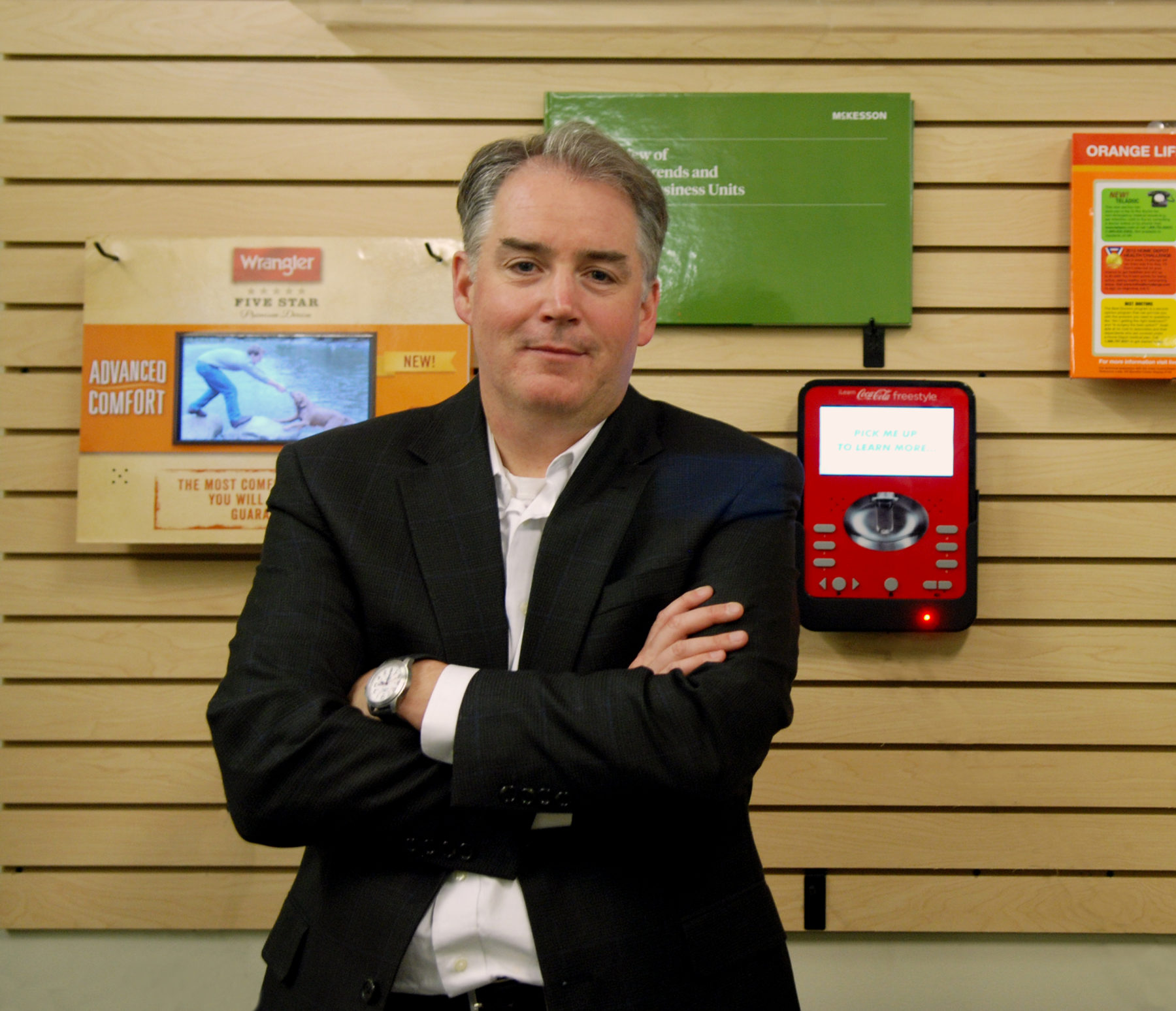Kevin Clegg helped launch Americhip with his brother Tim in 2001 to offer brands innovative ways to capture attention and educate and influence their target audiences. The company has since built up a collection of multisensory communications platforms that put the power of video, audio, light, motion, taste and scent right into print campaigns. Kevin is responsible for the day-to-day operations of Americhip and works closely with all departments on sales, operations and marketing functions. He took the time to explain how pharma marketers can benefit from taking a unique approach to reaching their audience, why consumers are open to viewing even more screens in a world saturated with them and how technology is changing marketing.
PM360: Americhip was launched with the goal of marrying the best in paper and packaging engineering with microelectronics. What advantages did you see in the ability to incorporate technology in paper products?
Clegg: The beautiful thing about paper is that every project starts with a blank canvas. Early on, Tim (my brother, the CEO and co-founder of Americhip) and I committed to bringing on a team of paper and packaging engineers to custom design any form factor for an advertisement, marketing piece or communication device for our clients. From the beginning with our first company, Clegg Industries, we always had a focus on electronics and innovative solutions. When we started Americhip and committed to the paper and packaging engineers, we really saw the business blossom as we were able to offer our clients the unique solution of embedding electronics into any format of paper housing.
What kinds of things can marketers do with your Video in Print offerings?
We’d been working for some time on the possibility of embedding live video into print, and in late 2009 we introduced the technology to the marketplace as a magazine insert in Entertainment Weekly for CBS. The adoption rate in nearly every vertical market across the globe was an amazing thing for a company of our size to be involved in. Marketers from every industry saw the power immediately in being able to incorporate live video into a brochure, book or magazine insert. This is especially true in healthcare, in which you have complex and detailed information that must be conveyed to consumers in a direct and easy to understand manner. With Video in Print, marketers can now convey critical test data, mode of action and KOL testimony in all of their marketing and communication vehicles from physician mailers, detail aids, patient education and new starter kits. Our Video Slates include the same VIP technology but use rugged plastic housings and self-charging docking stations for use in waiting and exam rooms.
Americhip also specializes in Multisensorized Marketing and creating campaigns that can stimulate any or all of the five senses. What are some of the ways a marketer can incorporate senses into their campaigns?
Our Multisensory technologies are all about engaging the audience by communicating to all of their senses, which creates a stronger emotional bond. It’s just the way we’re hard-wired as people. When you experience touch, sound, smell and even taste as part of a campaign you engage at a much different level with that brand—it resonates and you remember that. For taste we created a very clever mailer for the state of Florida targeting college students with an anti-smoking message. We included a taste strip of a dirty ashtray as part of a pop-up mailer.
What is the reception on the customers’ end (both doctors and patients) to these video and multisensorized campaigns?
The results have been very positive. As much as people like us, they wouldn’t keep coming back if the specialty offering that we provide didn’t achieve the marketing goals and objectives that they have. We’re very focused on understanding the clients’ objectives, opportunities and challenges and working with them to develop the strongest solution for their target audience. We focus on ROO—Return on Objective.
You also offer a solution to improve patient adherence through your VIP Live offering. Can you describe how that works?
With our VIP Live technology we can now bring mobile into our video platform and give patients and consumers the opportunity to make live calls or texts directly from the printed page. This is a new proprietary technology platform that allows for two-way communication via print collateral, video slates or custom electronic devices. We’re excited about our VIP Live Platform, especially for patient adherence. Whether the patient has a mild condition or a rare disease, it is very important that there is efficient and consistent information that can be shared around the clock between a patient and his/her doctor, case worker or HCP. With one of our proprietary Video Slate 2.0 communication devices, a pharma company can provide critical video content to its patients, update it remotely, offer a 24/7 calling portal to a case manager or call center and even provide for a live app housed on the Slate.
We now live in a country in which almost everyone carries around a smartphone, so they always have a screen right in their pocket and they are always connected to the Internet. How has this changed a marketer’s approach?
Our focus at Americhip is to own the third, fourth and fifth screens. While everyone has a TV, smartphone and computer, there are other important screens that physicians, KOLs and patients will interact with and often times prefer over having their primary screens cluttered. That’s why our Video in Print, Video Slates and our new VIP Live have been so successful. Our clients are able to give their core constituents a branded, single-purpose device that is used solely to better understand the brand and product. So whether it’s a patient learning how to inject a new product or a mother sitting in a waiting room interacting with our Video Slate to learn about a new procedure, the “consumer” is absorbing the material at the moment it’s most critical to him/her.
With ever-evolving technology and changes to the healthcare system, what innovative approaches do you think healthcare marketers will need to take in the near future to better engage with customers?
I think we’re somewhat unique in that we service several key verticals, and so while healthcare is our largest, we also are able to bring insights and experience from financial, retail, entertainment and tech to the healthcare space. What we’ve learned is that no matter what vertical you are in, it’s all about improving the experience for your customer and managing all of the data available today to provide the best experience possible for your customers. Patients are just like other consumers. They are getting better educated and more aware of their options all the time. The smart marketing folks are going to make sure they have a direct portal to their client base to communicate core information when the patient most wants it and to know their patient’s habits well enough so the communication is relevant, detailed and timely. You need to provide that level of service today to succeed and thrive in any industry.






